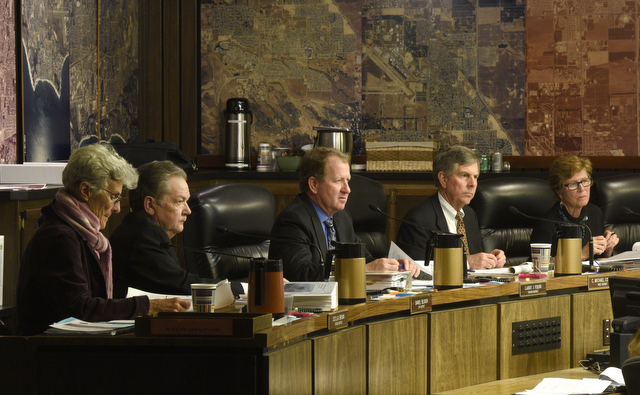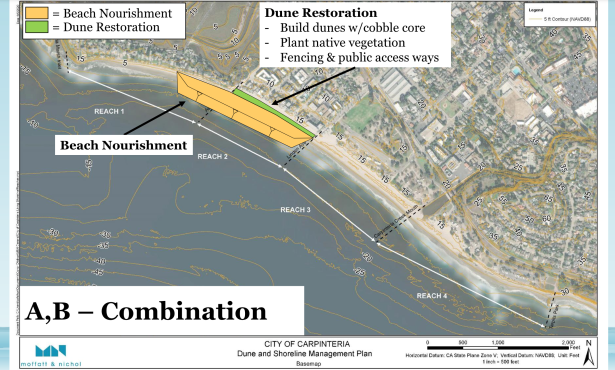Farmworker Housing Approved by Planning Commission
Bonipak Proposes to Build 30 'Bunkers' for 600 Guest Workers in Santa Maria Valley

On Wednesday, the Santa Barbara County Planning Commission approved an unprecedented housing project for as many as 600 guest farmworkers in the Santa Maria Valley.
Submitted last year by Bonipak Produce Inc. (formerly Betteravia Farms), the project proposal consists of 30 “bunkers” — each 1,400-square-foot lodge would accommodate 20 laborers — and three buildings that would function as common dining and laundry areas.
The commissioners voiced few reservations, and they unanimously approved the project. Just a couple speakers — namely with CAUSE (Central Coastal Alliance United for a Sustainable Economy) — were in opposition.
Currently, several farmers in the county use the H-2A program — the federal guest worker program that allows foreign-born individuals to work in agriculture temporarily, typically just shy of a year. According to the Department of Homeland Security, admissions of H-2A workers in the U.S. have grown steadily in past years — to 240,600 in 2014 from 46,000 in 2006. But a definitive count of workers currently in the U.S. — or in Santa Barbara County — is not available.
On Wednesday, Bonipak’s production manager was among many speakers urging the commissioners to approve the project. He said he grew up harvesting strawberries in the area. “My kids don’t want to work in agriculture,” he said. “I fortunately have a better life and can put them through college.” He added that the H-2A program “gives a better life to the domestic employees.” With more H-2A workers in the area, he said, domestic laborers work can work just eight hours a day — rather than 10 to 12.
Also in support, Santa Maria Mayor Alice Patino said she was initially skeptical of the H-2A program but has since come out in full support. “These are documented workers who are coming up here,” she said. “And they are vetted.”
“Most crops are delicate,” added Claire Wineman, president of the Growers-Shippers Association, “and almost exclusively harvested by hand.” Others explained harvesting strawberries late in the day makes them soft and mushy.
The approval comes at a time of a severe farm labor shortage in Santa Barbara County. According to Growers-Shippers, that shortage is as high as 25 percent, translating to an estimated $11 million loss in unpicked crops. The decision is also several weeks after two farmworker housing projects in Nipomo went up in flames — suspected to be arson — after neighbors complained at length about traffic and public safety, claiming the project would decrease nearby property values.
In all, some commissioners expressed unease about “prejudicial” language in the staff report, particularly in relation to condition requiring a safety monitor on site. The report indicates one on-site manager would be responsible for overseeing the occupants. “Do we normally require this type of language in a project?” asked Chair Larry Ferini. “It just smacks of discrimination to me.” Commissioners Cecilia Brown and Daniel Blough concurred. (Chair Ferini is related to the owners of Bonipak and used to work there, but he said he has not had any financial ties to the company for two decades.)
Joe Leonard, Bonipak’s chief executive officer, agreed language could be problematic, but he said they have since discussed the issue with the Sheriff’s department. Bonipak currently employs 250 H-2A workers, a number that has increased by about 50 in recent years. Of the hundreds, he said, just three were sent back to Mexico because of drug use.
On May 29, Sheriff’s Commander Craig Bonner had sent a letter to the Planning Commission expressing concern an incident on site could strain Sheriff’s Office resources; just four deputies are assigned to the unincorporated area of the Santa Maria Valley. After deliberations, the commissioners agreed to require the applicants to hash out a plan with Sheriff’s personnel.
Hazel Davalos, a director with CAUSE, charged the project is in a rural, isolated area (west of Orcutt). The bunkers are “just barely larger than a typical prison cell,” she contended. “This is not housing. It’s a labor camp.”
The applicants will provide the workers with three transportation trips for recreational purposes, to buy groceries or attend church. “That means workers are essentially not allowed to leave the camp except by employer authorization,” Davalos said. “What if a worker wants to talk to an attorney about their labor rights? Will they be able to ask the company who employs them to drive them there?”
Meanwhile, CAUSE has pressured the county supervisors to adopt a Farmworker Bill of Rights — job protections that go further state and federal regulations. A report claiming egregious violations in the fields in the county has received serious pushback from the agriculture industry. They contend poor conditions are very rare. At a recent Board of Supervisors meeting, several speakers asked Chair Peter Adam — who co-owns giant Adam Brothers Farming — to hold a hearing on the issue. Adam declined to do so. It’s worth noting the other county supervisors could also place the item on the agenda but they have chosen not to take such action. Stakeholders continue to meet with CAUSE.
Requests for comment on the project — and the H-2A program more generally — went out to six of the nine candidates running to represent the 24th Congressional District: Helene Schneider, Salud Carbajal, Bill Ostrander, Matt Kokkonen, Justin Fareed, and Katcho Achadjian. Ostrander, who said his family used to hire H-2A workers annually to pick tomatoes in Michigan, was the only one to comment. He called the agriculture employee housing a “good investment.”
“[I]n my limited view, it would appear to meet a very important need for farm labor housing and is thoughtfully positioned on the farm for minimum impact on the surroundings and agricultural resources,” he said in an email. “The high cost of housing — whether rented or constructed — requires farm operators to invest in long-term solutions.” He added, “[W]e have a farm labor shortage in our district, and that, in turn, encourages more of our foods to be sourced from other countries with less labor and environmental regulation and high-carbon-emitting transportation costs. Much of the seasonal immigrant labor is in the production of fruits and vegetables. The farm bill needs to be reconsidered in a manner that encourages fruit and vegetable production (0.45% of farm bill) over subsidized corn and soybeans (80% of farm bill).”
Carbajal, who is a county supervisor, said he legally could not comment because the matter could go before the Board of Supervisors.
Many farmers opt not to apply for H-2A workers because of its expense and housing and transportation requirements. In addition, the program’s cumbersome bureaucratic component deters many. And very few attorneys in the entire state process the applications.
Specifically, farmers must demonstrate the job is temporary — that there are not enough U.S. workers who are “able, willing, qualified and available to perform work at the place and time needed.” The program also stipulates that U.S. workers will not be adversely affected. Employers must guarantee at least 75 percent of the number of hours in the job offer or pay for the shortfall; pay for transportation costs of returning to country of origin; provide housing; and offer workers compensation (but not health insurance coverage).
Nearly 300 undocumented farmworkers were terminated in March from Bonipak as a result of Immigration and Customs Enforcement (ICE) investigations. Late last year, hundreds were also let go from Adam Brothers Farming. No other ICE worksite inspections have been reported since. The terminated farmworkers were not deported. Many reportedly went back to work at the same field — hired through a contractor.
Applicants hope to complete the project by March 2017.



